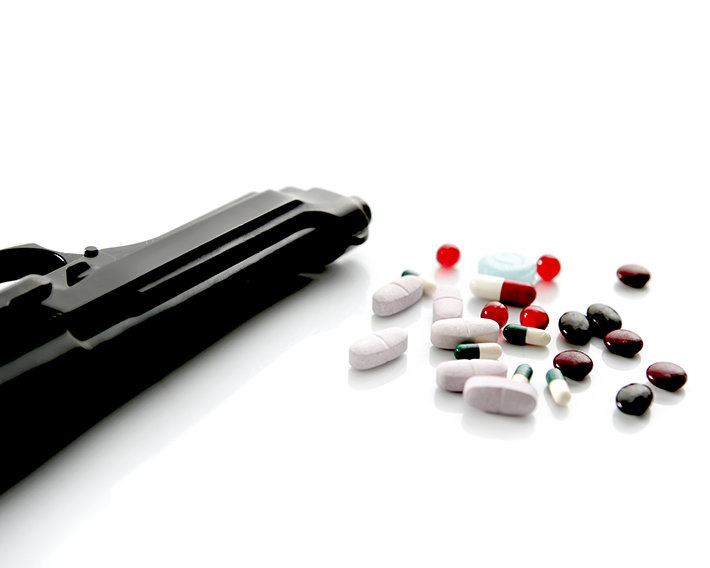Robberies and violence have become more common at local pharmacies across the country. This article takes a look at some past incidents, why these incidents are occurring and how pharmacists and pharmacies can protect their locations from becoming a victim of a robbery and how pharmacies can understand how to protect themselves from what is becoming known as narco-violence.
On a quiet June day in 2011, in a tiny pharmacy in the sleepy suburban town of Medford, New York, a deranged gunman high on prescription drugs executed four innocent victims in cold blood. “In all of my law enforcement experience and in the experience of the police that are involved in this investigation, this is one of the most heinous, brutal crimes we have ever encountered,” Suffolk County Police Commissioner Richard Dormer said at a news conference describing the incident. On July 11, 2011, Michael Todd, the bassist for the progressive rock band Coheed & Cambria walked into a Walgreens pharmacy in Attleboro, MA, handed the pharmacist his cell phone, which had a text message stating he had a bomb, and demanded OxyContin. The pharmacist told him the store does not carry the powerful pain medication and instead handed over six bottles of oxycodone, the active ingredient contained in OxyContin. Todd left the pharmacy, jumped in a cab and headed to the Comcast Center in Mansfield, where he was arrested prior to going on stage. Although the above-referenced cases would have been incomprehensible a few years ago, those who illicitly seek powerful pain drugs from pharmacies are becoming more brazen and the crimes more bizarre.
According to the Drug Enforcement Administration, there has been a significant increase in pharmacy robberies throughout the United States. Suspects typically include both addicts and drug dealers who know the street value of powerful and addictive prescription drugs. In the wake of the killings in Medford, New York, Senator Chuck Schumer said ” the abuse of prescription narcotics is reaching levels not seen since the crack epidemic of the 1980’s and Pharmacy robbery early 1990’s”. The violent crime that takes place every day, typically associated with the illicit manufacture and distribution of drugs like cocaine and heroin, is taking place in pharmacies across the U.S. by those in search of drugs that are ordinarily found in the medicine cabinet.
The local pharmacy employee is as vulnerable to being the victim of a violent crime as the clerk at the local convenience or liquor store. As the risks increase so do the safeguards that pharmacies are taking to protect their stores and employees. This trend has caused some pharmacies to change the way they do business; enhanced security measures are commonplace today. Surveillance cameras, silent alarms, employee panic buttons are now common. These concerns have caused some pharmacy chains as well as independent pharmacies to discontinue fulfilling prescriptions that contain oxycodone. Several have placed signs in their front window stating that they do not carry certain oxycodone products. Like the bank employee who inserts a red dye pack during a robbery, one national pharmacy chain installed a tracking device contained in a bogus OxyContin pack, which resulted in the capture of several robbery suspects.
When opiate based pain medications are abused they may provide a high similar to heroin. Many who become addicted to powerful prescription painkillers subsequently begin abusing heroin, which is often cheaper and easier to obtain. The difference between the addiction to a licit drug and an illicit drug becomes a matter of availability and economics. The crimes and social costs that are associated with heroin addiction and prescription drug addiction are the same; the stigma between them has disappeared. Law enforcement and social service agencies are exhausting resources dealing with the subsequent societal by- products. Treatment centers and homeless shelters are filled to capacity with people who became addicts and whose lives ultimately spiraled out of control. Prisons are full of inmates who committed crimes to facilitate their need to get high.
The pharma industry has developed and marketed powerful pain medications that are worth their weight in gold to the millions of Americans who suffer from chronic pain. Unfortunately, these drugs are also worth their weight in gold to those who misuse, abuse and illicitly distribute these controlled substances. The narco-violence that is associated with drugs does not discriminate between powder and a pill, which is why your local pharmacy is becoming as fortified as your local bank.

